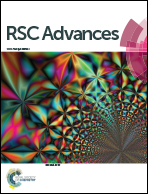Functional characterization and molecular modelling of FnFgBP, a surface protein from Streptococcus agalactiae
Abstract
Pneumococcal adherence and virulence factor A (PavA) were first identified in Streptococcus pneumoniae as an adhesin binding to fibronectin and studies suggested that it is an important virulence determinant. Homologs of PavA are found in many Gram-positive bacteria including S. agalactiae. However, to date, the details of its structure or mode of interaction with the host molecule(s) are not known. To characterize and identify the ligand binding region of GBS1263 of S. agalactiae (ortholog of PavA), two segments of GBS1263 namely seg-N (residues 1–264) and seg-C (residues 265–551) was cloned and expressed which resulted in accumulation of proteins in inclusion bodies. Seg-N and seg-C were solubilised using urea and subsequently the refolded proteins were purified. Circular dichroism studies and secondary structure prediction indicated that both the segments predominantly consist of helices. Molecular modelling also supports this data. Sequence comparison of these segments with a previously characterized fibronectin (Fn)/fibrinogen (Fg) binding protein, FBP54 from S. pyogenes showed that the residues 77–165 of seg-N have 81% similarity with the Fn/Fg binding region of FBP54 whereas seg-C has no significant similarity. Binding assays (dot blot, western blot and ELISA) and biolayer interferometry studies indicated that seg-N binds to both Fn and Fg whereas seg-C binds only to Fg. The present study has identified that GBS1263 could be a dual-ligand binding adhesin, binding to Fn and Fg using its different binding regions. This property is analogous to S. aureus adhesin FnBPA which binds to Fn and Fg using its different modules. Based on its dual-ligand binding property, we termed GBS1263 as FnFgBP (fibronectin/fibrinogen binding protein).


 Please wait while we load your content...
Please wait while we load your content...